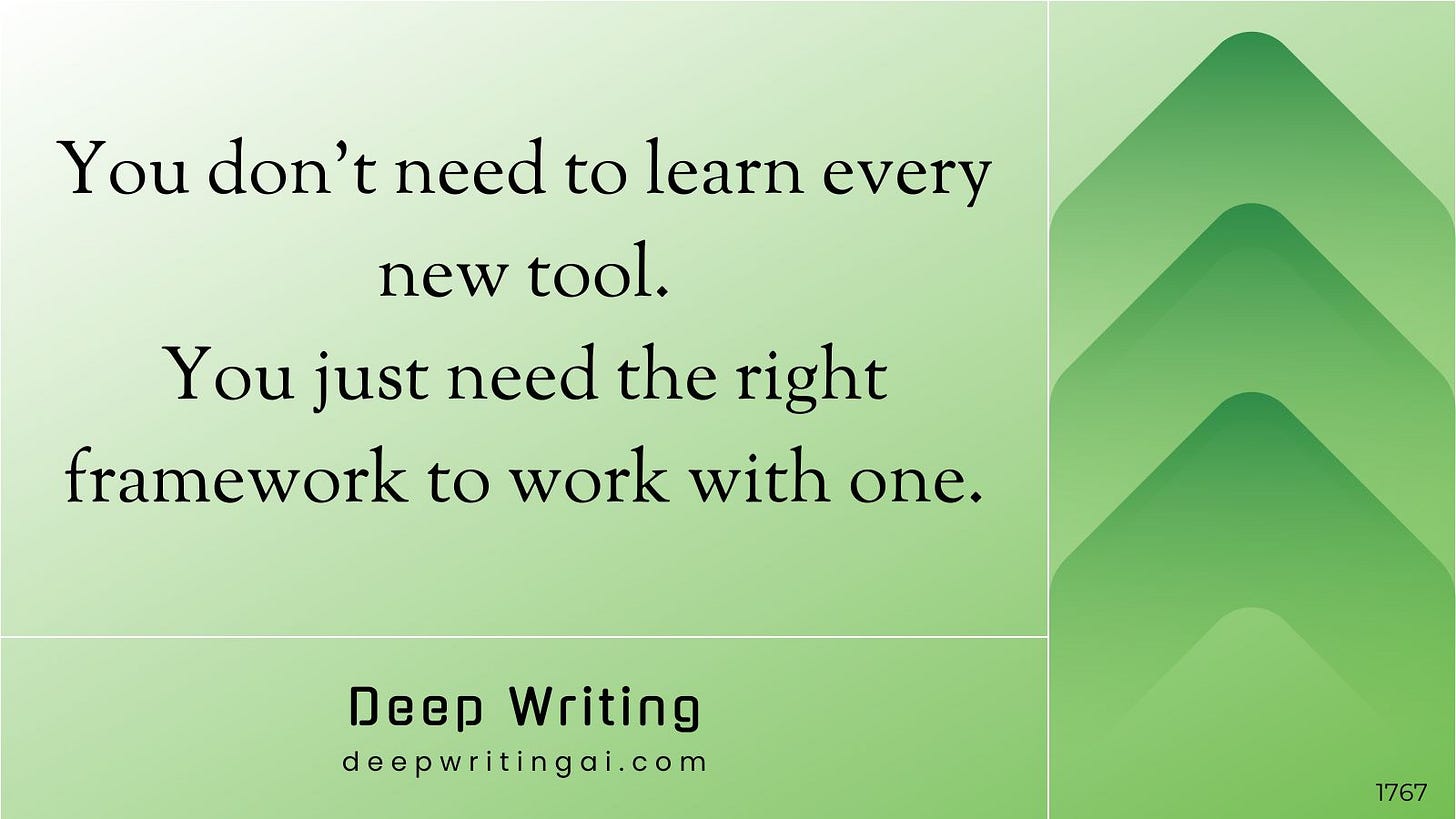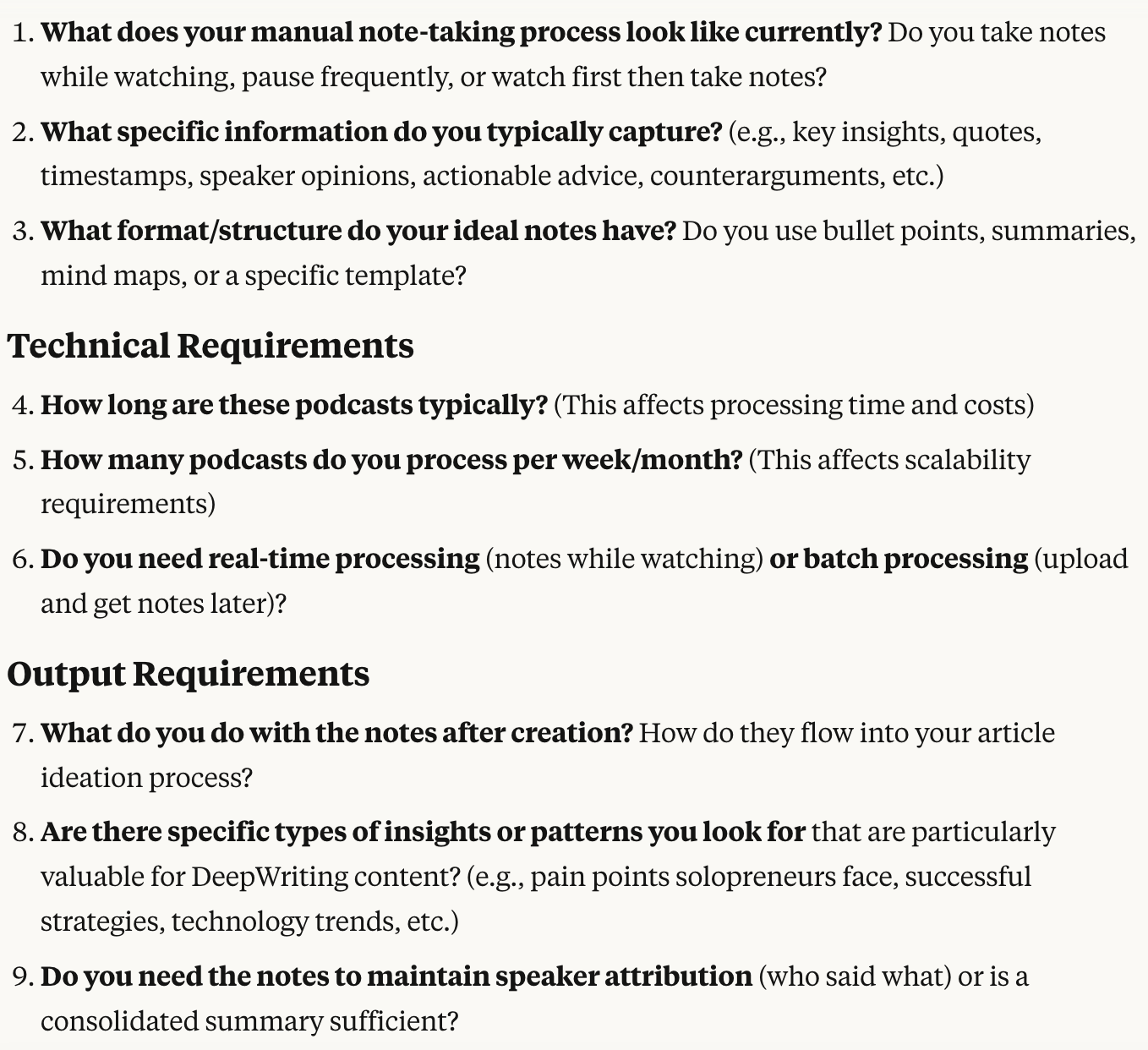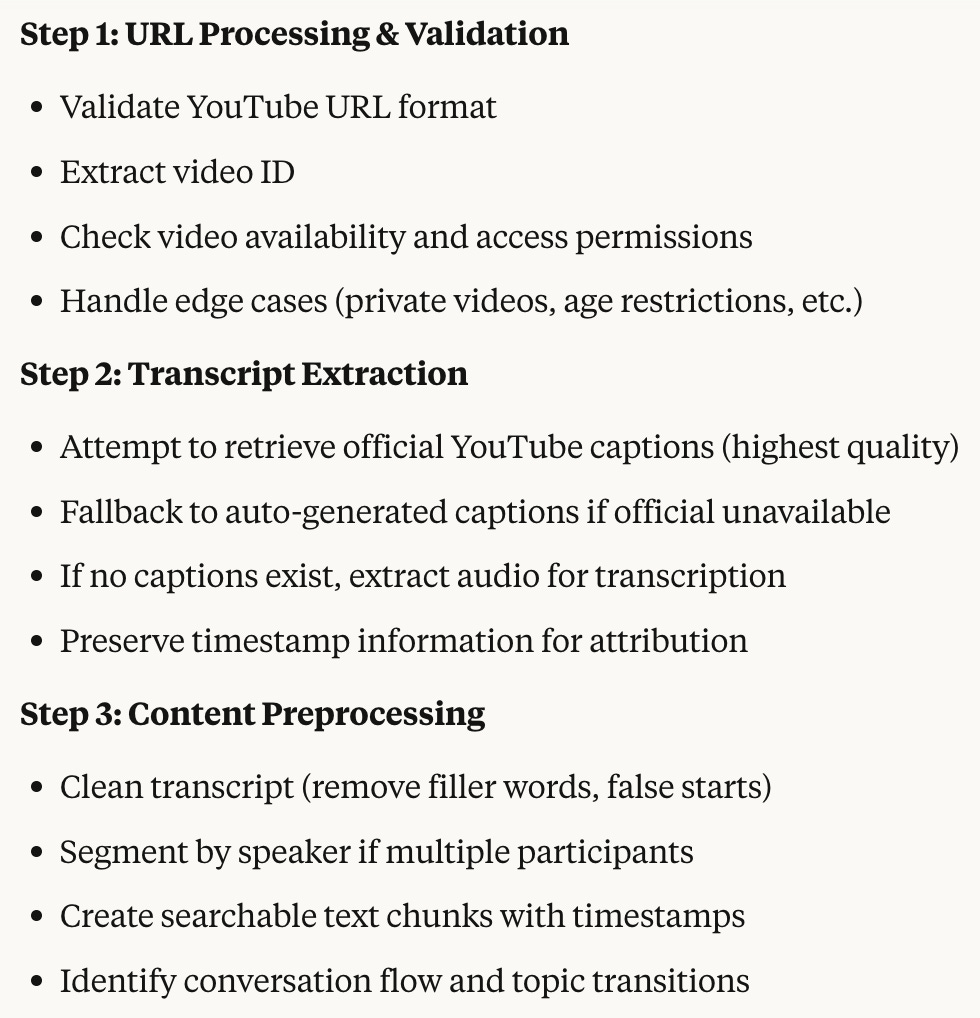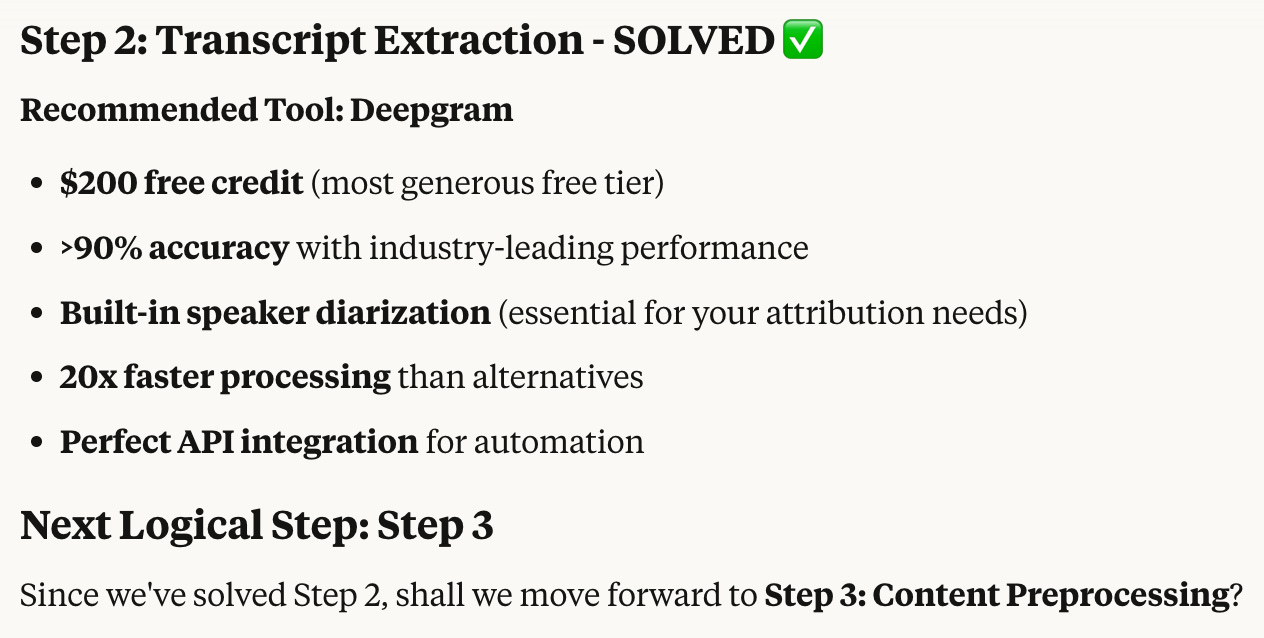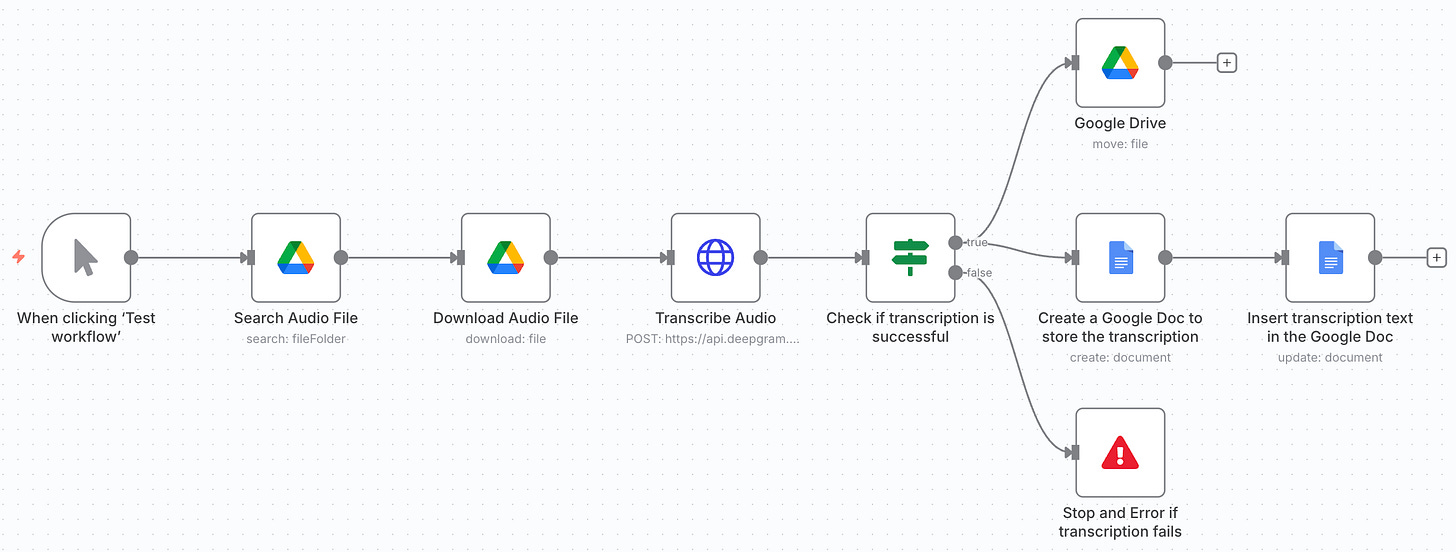How to Work with AI as a Non-Tech Solopreneur
Stop chasing new tools. Build your first automated system using just ChatGPT or Claude.
AI feels overwhelming.
Every week brings new tools, tutorials, and “revolutionary” breakthroughs. You know AI could help your business, but you don’t know where to start.
Here’s what most solopreneurs get wrong: they think they need to be on top of the latest AI tool in the market to be on top of the AI game.
The truth is, you don’t need to learn a hundred different tools.
You just need to learn how to use ChatGPT or Claude effectively.
Today, I’ll show you how I use Claude to automate my processes using a real example, then help you adapt this to your specific business processes.
Step 1: Think about what existing process should be improved
Instead of asking, “What AI tools should I use?”, ask: “What do I do repeatedly that takes too much time?”
Anything that you perform repeatedly and follows a logical sequence of operations is a good candidate to be automated using AI.
Let me show you exactly how this works.
I watch lots of podcasts to stay on top of the industry. I take detailed notes to understand topics and generate article ideas. These notes help me understand topics thoroughly and generate article ideas for my newsletter.
The watching is fun, but the note-taking is time-consuming and messy.
Sometimes I miss critical points, and the perfectionist in me worries about what other valuable insights I might have missed.
I’d love to have an assistant that would automate the note-taking for me.
While there might be tools out there that could do this, I want something that’s tailor-made for me so that I can control exactly how it behaves.
Step 2: Break a high-level task into atomic low level tasks
Don’t ask the AI: “Help me automate note-taking from YouTube videos.”
While the AI would try its best to fulfil the request, it’s highly unlikely that it would do a good job. Why?
This is a high-level task with countless nuances:
What kind of YouTube video is it? Podcast, instructional, motivational?
What’s the goal of note-taking? Deep understanding or idea generation?
Where should notes be captured? Google Docs, Notion, Obsidian?
What specific elements should every note contain?
For example, here’s what I think every podcast note should include:
Quotes: Interesting quotes made by speakers
Keywords: Key terms mentioned in the video
Questions Asked: Questions posed during the conversation
Concepts Explained: Core concepts that were broken down
Article Ideas: Potential newsletter topics based on the content
Mind-blowing Revelations: Moments that made me go “Whoa!”
Other Noteworthy Points: Additional insights worth capturing
Without these details, AI will produce something generic and largely useless.
How to break a high-level task into low-level tasks
Here’s what I would do:
Open Claude/ChatGPT and type:
I run a newsletter called DeepWriting (DW) that helps solopreneurs looking to build authority online create AI-powered content systems that turn expertise into consistent, authority-building content in a fraction of the time.
I watch a lot of YouTube podcasts and take down notes. These notes are used to thoroughly understand the topic(s) and to come up with article ideas for my newsletter. Watching the videos is fun but taking down notes is time-consuming. Also, sometimes I miss an important point.
I want to use AI and automatically generate a thorough note from a YouTube podcast.
I want you to break down the whole process of going from a YT podcast to a structured note into logical atomic steps. Do not think about tools to implement a step now.
Also, do not assume anything. If you have any doubt, ask questions.This step is meant to brainstorm with the AI and break down the high-level goal into smaller steps. This step often makes me think about a process differently.
Claude asked me clarifying questions like:
After answering, it broke down the high-level task into subtasks:
Step 3: Ask the AI to research and find tools for each step
Now that the steps are finalized, let’s ask the AI to list the tools that will help us automate the whole process. Here’s a sample prompt I use:
Perfect! Let's go step-by-step. Search the web and suggest a tool for Step 2: Transcript Extraction. This tool should be able to input the audio file and output transcripts with high accuracy. It should have a generous free tier and satisfy most of our requirements.This is what Claude gave:
Iterate and ask questions till you understand why we’re using a tool and why not something else. Consider constraints like budget, scale, and ease of use.
Step 4: Once the tools are finalized, ask AI to guide you with implementation
After you’ve identified all the tools for each step, ask the AI to help you build the system. Start with simple connections between tools, then gradually add complexity.
The key here is to build incrementally. Get one step working before moving to the next.
This is what I built after working with the AI in one evening:
End-to-end workflows in n8n that:
Takes a YouTube video mp3 as input from Google Drive (I extracted the mp3 out of the system for now)
Transcribes the audio using Deepgram API
Stores the transcription into a specific folder in Google Drive
Picks up the transcription file from the Google Drive
Extracts my brand details like value statement, ideal customer persona etc. from a database
Generates article ideas using Claude and ChatGPT and stores them back in the database
Score each article idea indicating how likely they are to resonate with my audience
My knowledge of coding did help me here, but even without coding, one can implement this in 2 days, working with the AI.
Remember: “Don’t hesitate to ask stupid questions”. A few months back I had no idea what n8n was, and I just asked questions like: “What is n8n?”, “How difficult is it to learn?”, “How do I connect to my Gmail using n8n?”
Step 5: Stay in the loop and iterate
Run your automation on 3-5 pieces of content first. Compare the AI output with what you’d create manually.
Ask yourself:
Is the AI missing important details I’d normally catch?
Is it capturing information I don’t actually need?
Are the outputs in the format that’s most useful for your next step?
Make incremental improvements
Don’t try to fix everything at once. Pick the biggest problem and solve that first.
For my podcast note-taking system, I noticed the AI was capturing too many minor details and missing the “aha moments” that matter most for article ideas.
I solved this by adding a scoring step that rates each insight based on how relevant it is to solopreneurs building authority.
Ask AI to suggest optimizations
After a few iterations, copy a few examples of your automation’s output and ask the AI:
Here are 3 examples of notes my automation created. What patterns do you see? What could be improved to make these more useful for generating newsletter article ideas?The AI often spots patterns you’ll miss.
Scale gradually
Start with your most frequent, time-consuming process. Once that’s working smoothly, identify your next automation candidate.
Don’t try to automate everything at once. Master one system, then build the next.
How to adapt this to your business
The exact same approach works for any repetitive process in your business.
For client onboarding: Break down your current process (initial call → contract → project kickoff → deliverables). Ask AI to suggest tools for each step. Build connections between them.
For content repurposing: Map out how you currently turn one piece of content into multiple formats. Identify the manual steps. Find AI tools that can handle the transformation and formatting.
For lead follow-up: Document your current sequence (initial outreach → follow-up emails → proposal → closing). Use AI to draft personalized messages and automate the scheduling.
The framework stays the same:
Identify the repetitive process
Break it into atomic steps
Research tools for each step
Build incrementally
Monitor and improve
Bottom line
You don’t need to become an AI expert overnight.
You don’t need to learn dozens of new tools.
Start with ChatGPT or Claude. Pick one time-consuming process. Break it down. Build it step by step.
In a few weeks, you’ll have your first automated system running. Then you can tackle the next one.
The solopreneurs winning with AI aren’t the ones using the most tools. They’re the ones who've automated their most painful processes.



